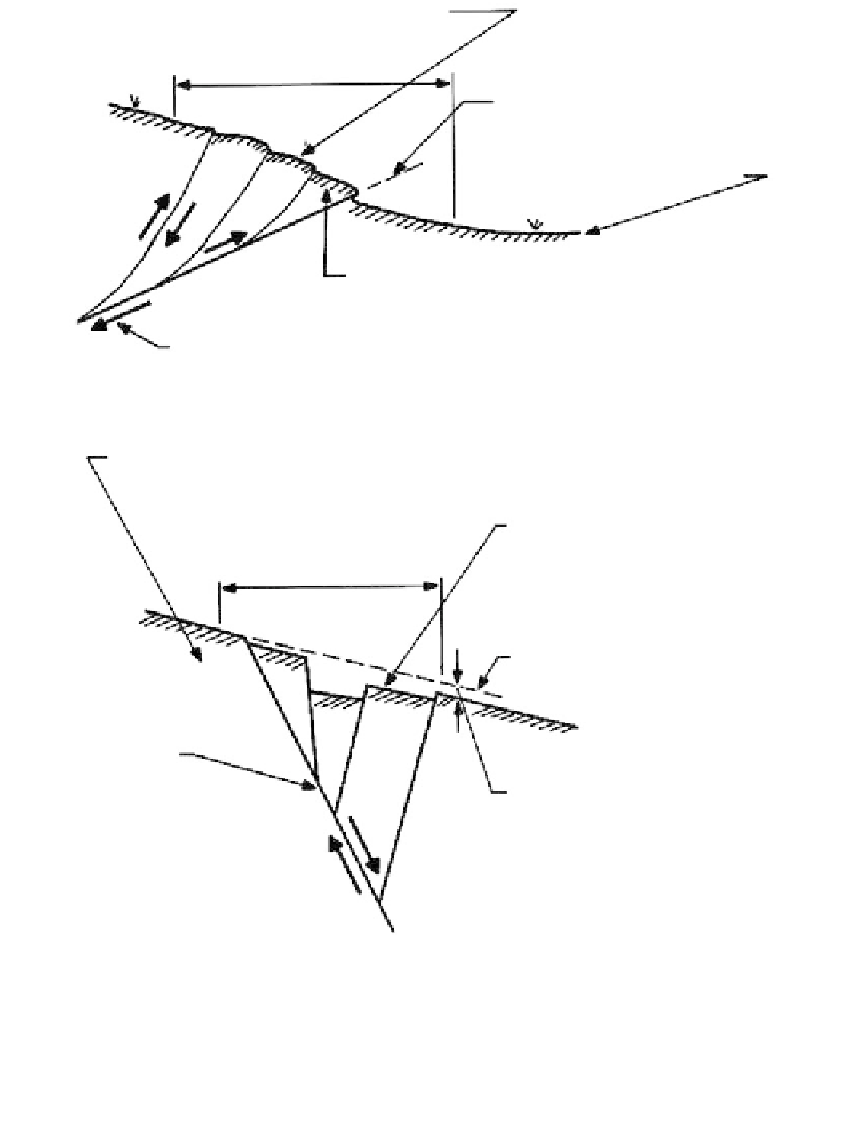Environmental Engineering Reference
In-Depth Information
Upthrown block is distorted with breaks
on bench and subsidiary faults
Distance decreases
Main fault break
Little or no distortion
on downthrown block
Narrow portion of wedge often badly
shattered and landslides occur
Direction of relative movement
(a) Thrust fault
Little or no distortion of subsidiary
faulting on upthrown block
Downthrown block pervasively
fractured and topography
distorted (area of grabens
and subsidence)
Distance increases
Original ground
Main fault
break
Net vertical
displacement
(b) Normal fault
FIGURE 6.60
Characteristics of thrust and normal faults during initial displacement: (a) thrust fault; (b) normal fault. (From
Sherard, J. L. et al.,
Geotechnique,
24, 367-428, 1974.)
General Construction Impact
Fault zones provide sources for large seepage flows into tunnels and open excavations, or
seepage losses beneath and around concrete dams. Particularly hazardous to tunneling
operations, they are the source of “running ground.” Concrete deterioration can be caused
by the attack from sulfuric acid that results from the reaction of oxidizing surface waters
with sulfides such as pyrite and marcasite deposited in the fault zone.


